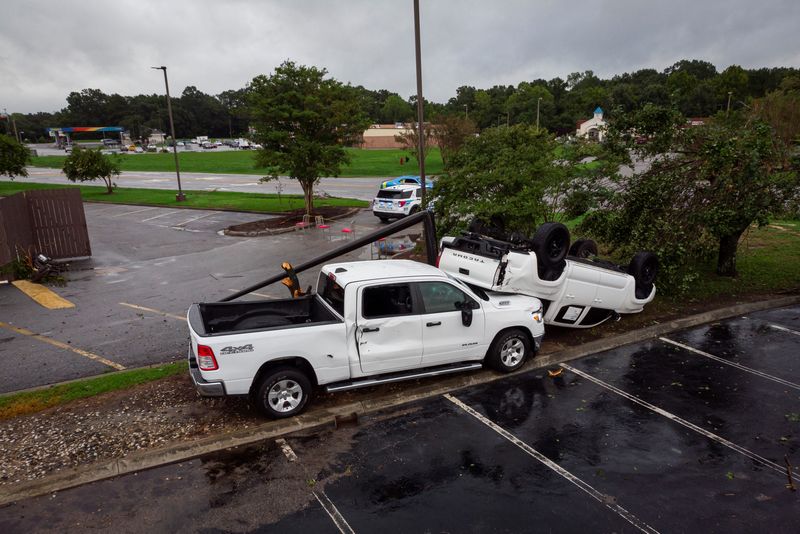In an eerie twist of meteorological fate, Tropical Storm Debby has decided to hover menacingly off the coast of the Carolinas, refusing to budge. The skies have opened up, pouring their unending wrath upon the Southeast, leaving the region teetering on the brink of catastrophic flooding. And just when you thought the skies might show some mercy, Debby is gearing up to gather momentum and head north, as if the Southeast hadn’t suffered enough.
So far, the storm has claimed at least six lives in Florida and Georgia. It first made its brutal entrance as a Category 1 hurricane, crashing into Florida’s Gulf Coast on Monday with an unsettling mix of fury and unpredictability. From there, it swerved northeast, setting its sights on the Southeastern and mid-Atlantic coasts. These areas are now bracing themselves for days of relentless torment.
Governors across the Carolinas, Florida, and Georgia have all thrown up their hands in grim resignation, declaring states of emergency. Entire neighborhoods are underwater, streets have vanished beneath the flood, and homes—those once sturdy bastions of normal life—are now mere islands in a sea of despair.
North Carolina Governor Roy Cooper, with a somber tone that betrayed the gravity of the situation, warned every North Carolinian to brace for the worst: “Prepare for a deluge,” he stated bluntly during a briefing at the state’s Department of Emergency Management on Wednesday. The storm, in its cruel persistence, continues to dump torrents of rain onto an already saturated region.
Charleston, South Carolina, once under the heavy shadow of a citywide curfew, found a fleeting moment of relief as the worst of the storm passed. But don’t be fooled—there’s no comfort to be found here. The National Weather Service is sounding the alarm: another 3 to 9 inches of rainfall could be in the cards for the Carolina coast. With rain totals reaching 25 inches in South Carolina and 15 inches near Wilmington, North Carolina, and coastal Georgia, the situation remains perilously fluid.
As of late Wednesday, Debby was positioned just 25 miles east-northeast of Charleston, crawling north-northwest at a lethargic 3 miles per hour, its winds still howling at 60 mph. But the storm’s lethargy is deceptive—its next move is a likely landfall further north in South Carolina early Thursday, according to the National Hurricane Center.
The greatest danger posed by Debby isn’t just its winds or even its direct impact—it’s the staggering amount of rain it continues to unleash. Flooding, already extensive, is expected to worsen as the storm trudges up the Eastern Seaboard. In South Carolina alone, 15 homes have been severely damaged, with one obliterated by the relentless waters.
The chaos doesn’t stop there. Parts of Virginia are bracing for 3 to 7 inches of rain through Friday, while Maryland, Pennsylvania, and upstate New York could see 2 to 4 inches by Saturday. Flash floods are an ever-present threat as rivers and streams struggle to contain the deluge.
Neil Dixon, a meteorologist with the National Weather Service in Charleston, described the situation with a sense of awe and dread: “This is certainly an extreme rainfall event,” he said, pointing out that daily rainfall records have been shattered across the region. “The flooding has been something we haven’t seen in many years.”
Emergency management teams are on high alert, their eyes glued to the waterways that snake through the Carolinas, watching as the water levels rise ominously. The National Water Prediction Service has already forecasted that seven waterways are expected to hit major flood levels before Debby finally—mercifully—moves on.
In the coming days, all eyes will be on the skies, the rivers, and the steadily advancing storm. As Debby trudges northward, its legacy of destruction will likely continue, testing the resolve of those in its path.

